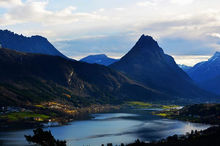24 hours : In search of 999,99,999, lost into hill of Unakoti,Tripura.
- Madhab Burman
- Aug 7, 2018
- 5 min read
Greek Legend Alexander the great after reaching in bank of river Indes said ,"What a magical land it is ! " India is a magical land though.
As of Bankim Chandra Chaterjee , India is land of ' Sujolang Sufolang Bonde Mataram's -land'. 'Unity in Diversity ' is the prime factor of India.
Swami Vivekananda said ,"Every particle of soil of this land is pillgrimage '. Tripura is the smallest child of India.
After hectic up and down , Tripura is standing today with her own glory .

Tripura name is linked to Tripura Sundari, the presiding deity of the Tripura Sundari Temple at Udaipur, one of the 51 Shakti Peethas __ pilgrimage centres of Shaktism and to the legendary tyrant king Tripur, who reigned in the region.
Tripur was the 39th descendant of Druhyu, who belonged to the lineage of Yayati, a king of the Lunar Dynasty. One of the Puranas, the text about the "exploits of Shiva", tells the story of the "sack of Tripura".
However, there have been suggestions to the effect that the origin of the name Tripura is doubtful, raising the possibility that the Sanskritic form is just due to a folk etymology of a Tibeto-Burman (Kokborok) name. Variants of the name include Tripra, Tuipura and Tippera.
A Kokborok etymology from twi (water) and pra(near) has been suggested; the boundaries of Tripura extended to the Bay of Bengal when the kings of the Tripra Kingdom held sway from the Garo Hills of Meghalaya to Arakan, the present Rakhine State of Burma; so the name may reflect vicinity to the sea.

I reached Tripura mid of July and visited agartala , udaipur , muhuripur etc.
Tripura is a magical place__ my heart saying . After conversation with my amigo , Pal , get to know there are treasure openly exist in northern tripura . He suggested to me visit the place .
From Agartala started journey at 6 am towards north. I explored the journey with my family. We reached Kumarghat around 9 am __ from there we reached Unakoti by private car, 30 km far away from Kumarghat and 8 km far from Kailash Sahar.
I was simply speechless for a sec ____ where we reached , it is not in mayan civic socitey nor in Incas society , it is in India . There are full of bas relief are exists .
Bas relief is is type of sculpture in which an image is projected at a shallow depth.
This technique can be seen in Eastern culture and in the art of ancient Egypt . In addition, bas-reliefs can be found in Asian art, including that of ancient India. One of the largest bas-relief sculptures in the country can be found at Unakoti, which is situated in the northeastern state of Tripura.
The name Unakoti means ‘one less than a crore’ or 999,99,9999 (a crore being a unit in the Indian Numbering System which is equivalent to ten million in the Arabic Numbering System), and has its origins in Hindu mythology.

Arguably dating back to the 8th-9th centuries, these sculptures have some interesting tales associated with them. Two of them stand out:
One
Legend has it that Lord Shiva and his entourage were headed towards his heavenly abode, Kailash.
When they decided to spend the night at Kailashahar — 10km downhill from Unakoti.
He warned his fellow travellers that they would have to leave before dawn, but after a night of revelry, Shiva was the only one who woke up on time.
Known for his short temper, Shiva cursed the late sleepers to an eternity on Earth and walked off to Kailash in a huff.
The entourage now adorns the hills of Unakoti as reliefs.
Two
According to another version, the images have been carved by a sculptor called Kallu Kumhar.
He was a great devotee of Parvati, so when Shiva-Parvati and their entourage were passing through this region — en route Kailash, there are some who say Varanasi — Kallu Kumhar asked to accompany them.
Shiva was wary of this proposition, so Parvati came up with a solution. She suggested that the sculptor make 1,00,00,000 images of Shiva — to appease him — and his entourage overnight, and should he be able to do so, he would accompany them.
As the sun rose the next day, he fell just one short of a crore — and that gave Shiva the loophole he needed to leave Kallu Kumhar behind.
Two and half
Another variation of this story is that Kallu Kumhar was given the task of carving the deities in a dream, but instead of carving images of all the gods, he carved one last image of himself, making it one short of a crore — a lesson, the locals say, on why not to give in to ahankara, or pride.

Whatever be the story behind these carvings, the logistics of how they were made is quite a mystery.
Most of the bas-relief sculptures are 30-40 feet high and have a rawness that is more akin to a tribal style than to the classical Indian style.
I found it to be similar to statuettes from the Aztec civilization — especially the way the eyes, teeth and headdresses have been depicted.
Several still grace the hillside — while some have given in to the ravages of time — others apparently are buried and need to be excavated.
There’s one with three Ganeshas, which appears to have a rivulet flowing atop it — making it seem as if he’s bathing.

Unakoti, historically, was considered a Shaiva Tirtha during the Pal era (8-12th century).

Walking across the serpentine stone bridges — most of them broken — it’s easy to imagine kings and mystics praying to their gods.
As we navigated our way through the staircases and bridges joining the two hills over which the statuettes are now scattered, I felt as if I’d chanced upon a world hidden from prying eyes — a secret domain where entry had to be earned.
One could see signs of springs and rivulets criss-crossing through the area and I couldn’t help but imagine how beautiful the place would have looked centuries ago with the streams, verdant hills, incense smells and sounds of the temple bells — the mind wanders further.

# How to Go ?
By Train from Agartala to Dharamnagar , get down at Kumarghat and take auto or private vehicle to Unakoti , one and half hour journey .
You can also visit from Agartala to Unakoti by booking private vehicle directly.
#When to Go ?
Anytime you can visit .Every year a big fair popularly known as Ashokastami Mela is held in the month of April.
Acharya, D., 2009. Unakoti India’s Largest Bas-relief Sculpture.
Bhattacharya, J., 2013. "Unakoti: Will UNESCO take it up as a heritage site?".
Melton, J. G., 2011. Ashokashtami. In: J. G. Melton, ed. Religious Celebrations: "An Encyclopedia of Holidays, Festivals, Solemn Observances, and Spiritual Commemorations. Santa Barbara: ABC-CLIO, p. 46."


























Comments